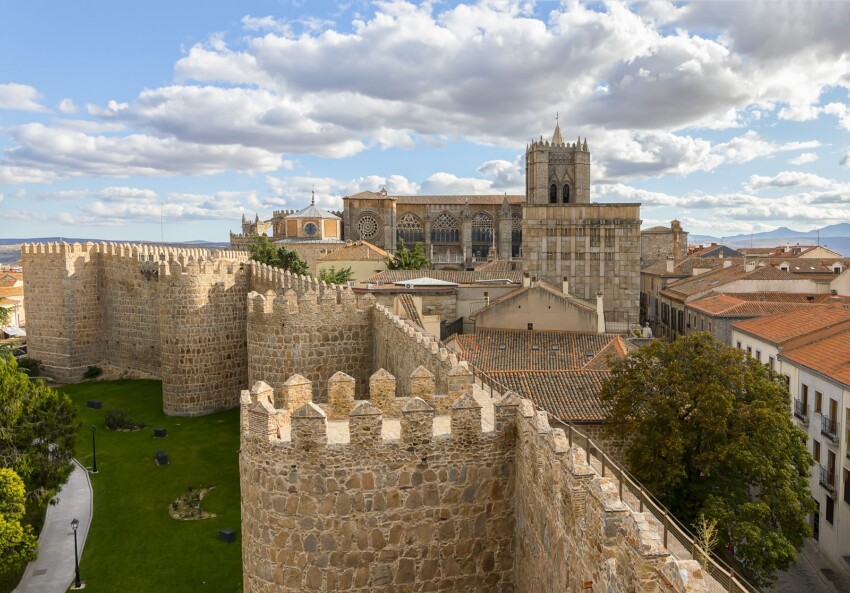

Enclosed within mighty walls at 1131 metres above sea level, Ávila is the highest provincial capital in Spain and one of the oldest cities in the country.
It is famous as Avila de los Cabarellos (of the gentlemen), but we could also call it Avila of the churches due to the large number of religious buildings. Some of these are linked to episodes in the life of Saint Teresa of Avila (not to be confused with the contemporary Saint Teresa), a brilliant Spanish nun and mystic born here in 1515.
For a lasting memory of your day in Avila, take a walk along its walls and admire the city’s expanse of rooftops from above; in the evening, exit the old town and enjoy the spectacle of the walls lit up from Avila’s most famous belvedere.
It is worth remembering that due to its altitude Avila is often affected by harsh and snowy winters. Summer is high season for tourism, although many local businesses are closed for holidays. The recommended time to visit Avila is spring.
Ávila is a city that invites slow discovery, where every corner tells centuries of history and spirituality. Its artistic and architectural heritage, perfectly preserved, offers visitors an authentic journey into the Spanish Middle Ages. Here are the most famous attractions in Avila, all of which can be visited in one day.
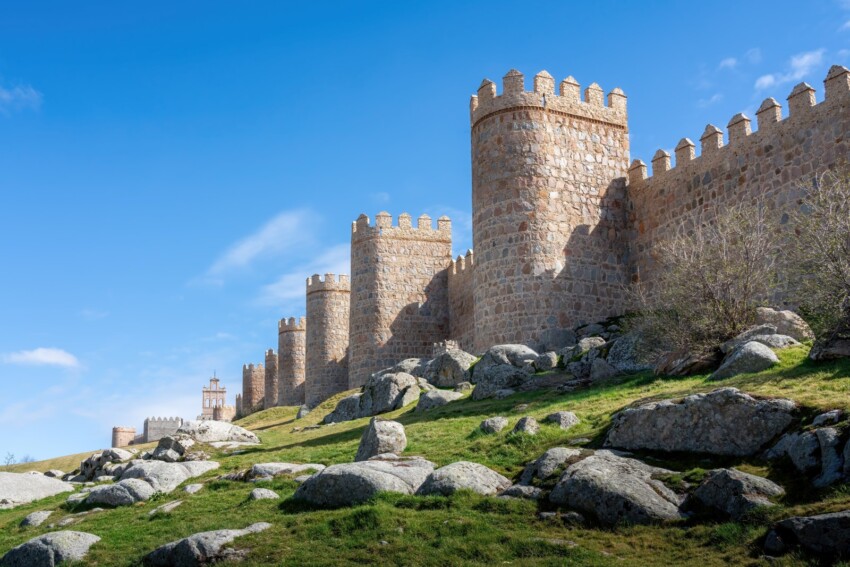
The great attraction of Avila is its impressive defensive walls dating back to the 12th century, built on the remains of earlier Roman and Muslim fortifications. At 2.5 km long, they are punctuated by more than 2,000 battlements, more than 80 towers, six gates and three gates.
They are certainly among the best-preserved medieval walls in Europe and due to their perfect state of preservation and their strong visual impact, they have become one of the most representative symbols of the entire region.
Admire this extraordinary city wall from the outside, then climb to the top and walk along the walls for a splendid view of the city enclosed within them: incredible photo opportunities await you. An entrance fee is required to walk along the walls, but it is money you will not regret spending.
There are two sections of the walls open to visitors: a 300-metre section accessed from the Alcázar Gate and a 1.3 km section that runs along the northern perimeter of the old city from the Leales Gate.
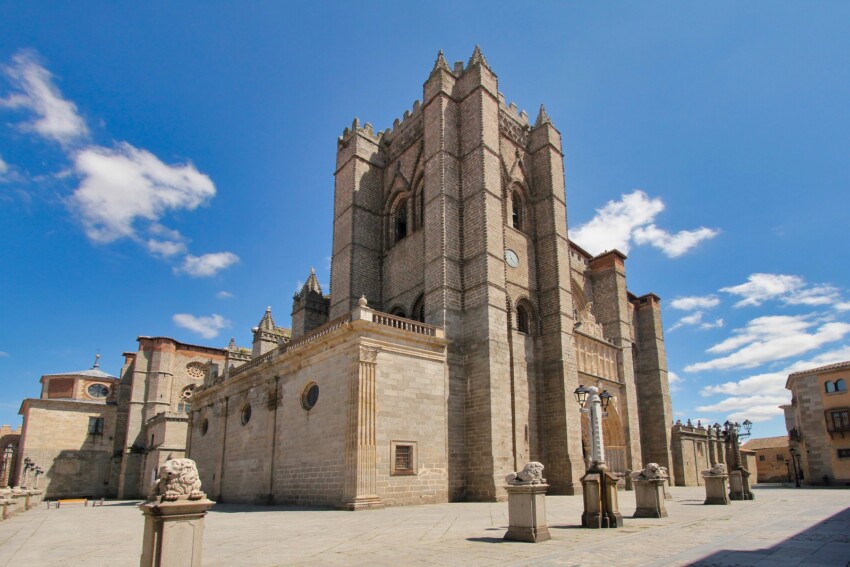
The Cathedral of El Salvador is one of the oldest examples of a Gothic cathedral in Spain, although its fortified apse, integrated into the city walls, gives it the appearance of a fortress. Begun in the 12th century, the cathedral combines Romanesque and Gothic elements in a unique architectural synthesis.
Inside, the Renaissance choir and the main altarpiece are particularly valuable works. The cathedral museum exhibits a rich collection of sacred art, including the 13th century Christ of the Battles. The Gothic cloister, with its finely decorated arcades, offers a moment of peace during the visit.
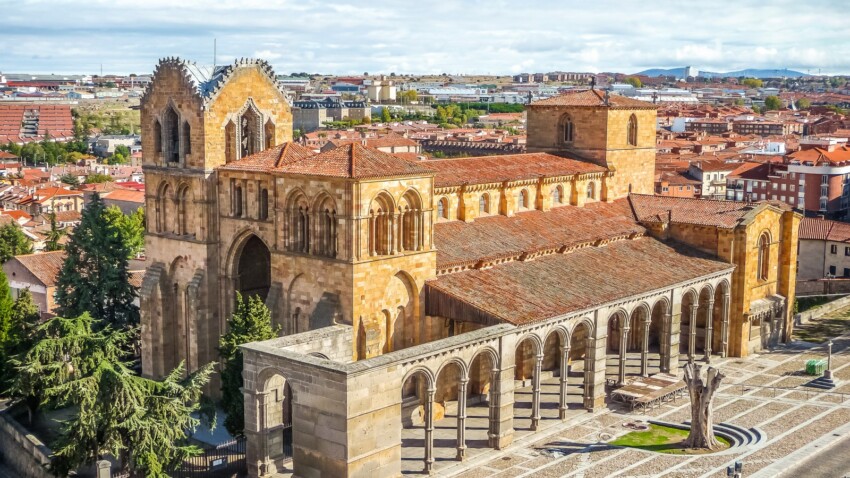
The Basilica of San Vicente is a masterpiece of Spanish Romanesque, built in the 12th-13th centuries on the site of the martyrdom of Saints Vicente, Sabina and Cristeta. The western façade, with its richly carved portico, is considered one of the most important works of Spanish Romanesque sculpture.
The interior of the basilica houses the cenotaph of the martyred saints, a masterpiece of medieval sculpture. The crypt, accessible to visitors, preserves the original site of the martyrdom. The basilica is also an important stopping point along the Camino de Santiago.
The Monastery of the Incarnation, located outside the walls, is one of the most important Teresian sites in Ávila. Here St Teresa lived for 27 years and had some of her most significant mystical experiences. The monastery preserves numerous mementos of the saint, including her cell and the place of transverberation.
The visit provides an insight into the daily life of the Carmelite nuns in the 16th century and the importance of St. Teresa in the reform of the order. The monastery museum exhibits personal belongings of the saint and valuable works of sacred art.
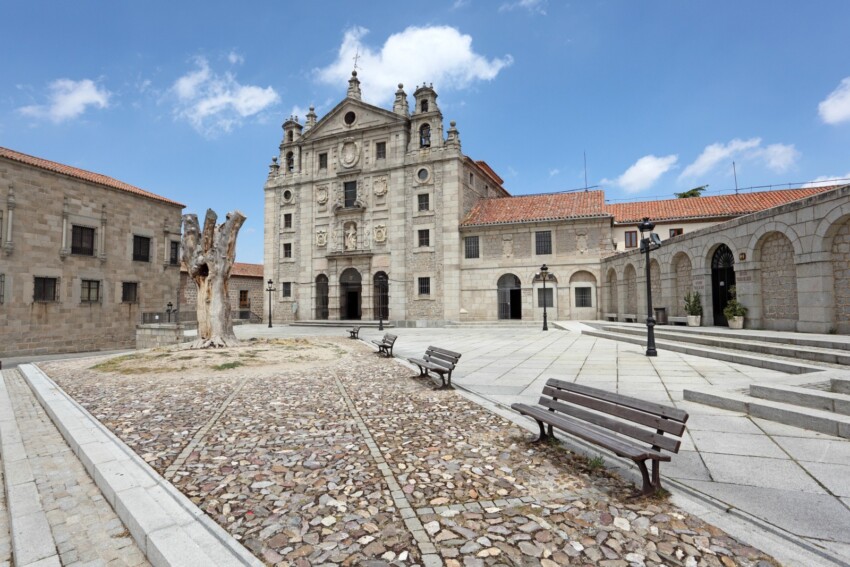
The Convent of St Teresa is built on the house where the saint was born. The Baroque building, with its characteristic granite façade, includes a church that houses important Theresa relics. The chapel of the nativity, built exactly on the spot where the saint was born, is the destination of continuous pilgrimages.
The convent museum exhibits a collection of manuscripts, relics and works of art related to the life of St. Teresa. The interior garden offers a moment of contemplation during the visit.
Everywhere you go in Avila you will find a reference to the life of St Teresa, including some churches that mark significant moments in the spiritual journey of the saint:
The Palace of Los Dávila is one of the best examples of medieval civil architecture in Ávila. This 13th-century palace-fortress retains interesting Mudejar elements and a fortified tower that offers beautiful views of the city. The interior shows how the Castilian aristocracy lived in the Middle Ages.
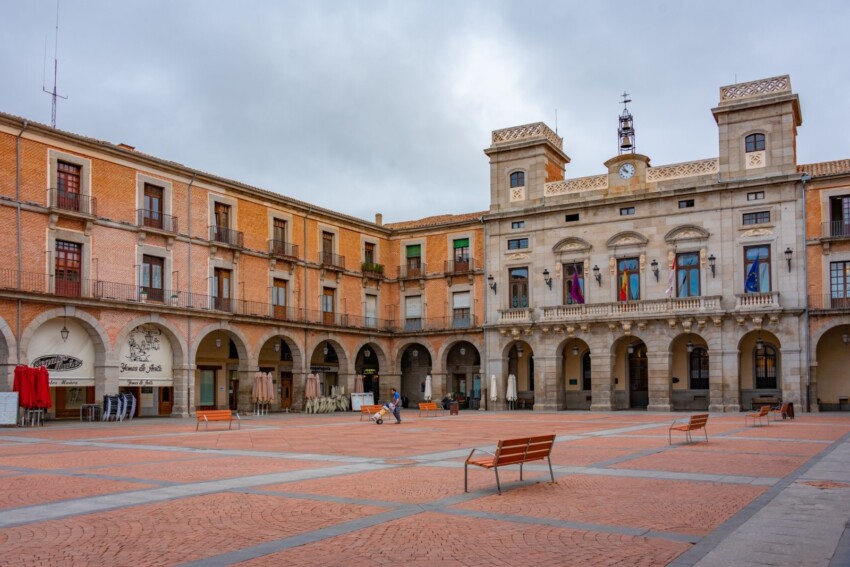
To breathe in the authentic atmosphere of Avila and live like a local, the right place is Plaza del Mercado Chico (also known as Plaza Mayor), a square that stands on the remains of the ancient Roman forum in the heart of the city.
It is a typical Spanish town square, lined with arcades, stately palaces and cafés, a popular meeting place for the citizens of Avila and tourists who can take advantage of the outdoor tables to sip a good coffee.
If you want to enjoy a splendid view of the walls, climb to the top of the Monument of the Four Places, north of the old town on the road to Salamanca.
Reachable with a short walk from the centre, it is the place where visitors and pilgrims were once blessed in order to enter the city cleansed of all sin and is also the place where it is said that St Teresa and her brother were found by their uncle as they tried to run away from home in order to sacrifice themselves in martyrdom at the hands of the Muslims.
Today, the monument has lost all sacredness and is mostly a lookout point for tourists armed with cameras who come here to capture the charm of the walls in a shot. It may no longer be sacred, but at night it is still magical.
In the following map you can see the location of the main places of interest mentioned in this article.
Avila is one of the most popular destinations for a day trip from Madrid. If you want to join an organised tour, you can choose from many proposals, perhaps combining this city with other fascinating places such as Segovia or Toledo.
Ávila’s location in the Sierra de Gredos makes it an ideal starting point for exploring the area’s nature and historic villages.
The Sierra de Gredos, less than an hour from Ávila, offers hiking opportunities for all levels. The regional park is famous for its granite formations, glacial lakes and wildlife, including the Hispanic goat. The Circo de Gredos is one of the most popular destinations for hikers.
El Barco de Ávila, a picturesque medieval village 80 km from the city, is famous for its PGI beans and the Valdecorneja castle. The Roman bridge over the Tormes River and the Romanesque churches create an architecturally interesting ensemble.
Madrigalde las Altas Torres, birthplace of Isabel the Catholic, conserves important medieval monuments including the walls, the castle and the convent of San Agustín. The main square, with its arcades, is one of the most characteristic urban spaces in the province.
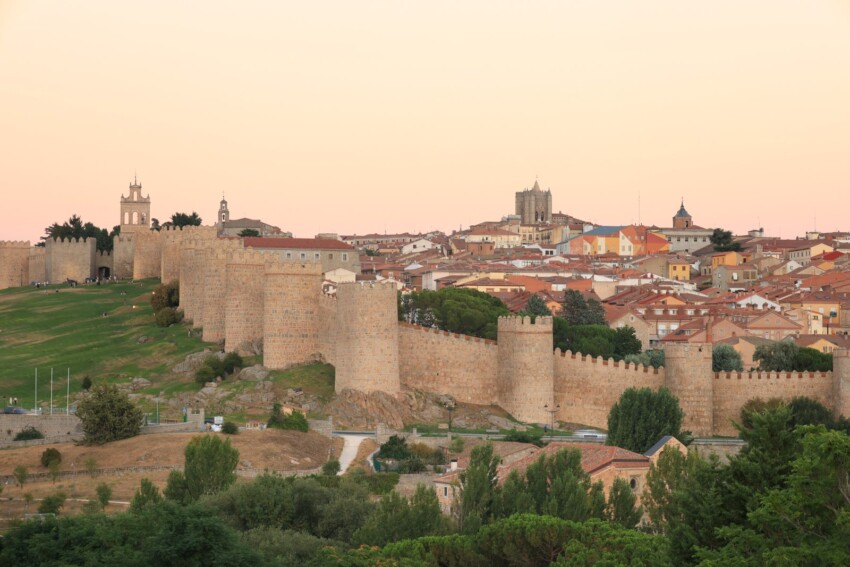
Due to its proximity to Madrid, many people reach Avila on a day trip directly from the Spanish capital. However, if you intend to make a touring holiday or want to spend the evening there, it might be convenient to reserve a hotel in Avila.
Within the walls there are boutique hotels converted from old aristocratic palaces that provide an authentic medieval experience. The area around the cathedral offers the most atmospheric accommodation, with spectacular views of the illuminated walls.
The station area offers modern hotels ideal for those arriving by train. Although it is further from the historical centre, prices are cheaper and connections to the centre are frequent.
Ávila is well connected to Madrid by high-speed trains that take about 1 hour and 30 minutes. The train station is located a short distance from the historical centre and is also served by regional trains that connect the city with Salamanca and Valladolid.
The nearest airport is Madrid-Barajas, from where Ávila can be reached by train (changing at Madrid Chamartin) or by direct bus services. The journey from the airport takes about 2 hours.
If you prefer to visit Ávila on your own, consider renting a car: the city is about 120 km from Madrid and can be reached quickly, in less than an hour and a half, with the freedom to stop en route if you feel like it. The city has several public car parks outside the walls, as the historic centre is largely pedestrianised.
What's the weather at Ávila? Below are the temperatures and the weather forecast at Ávila for the next few days.
Avila is the capital city of the province of the same name, part of the Castile and León region. It is located a little over an hour's drive from Madrid in a north-westerly direction.